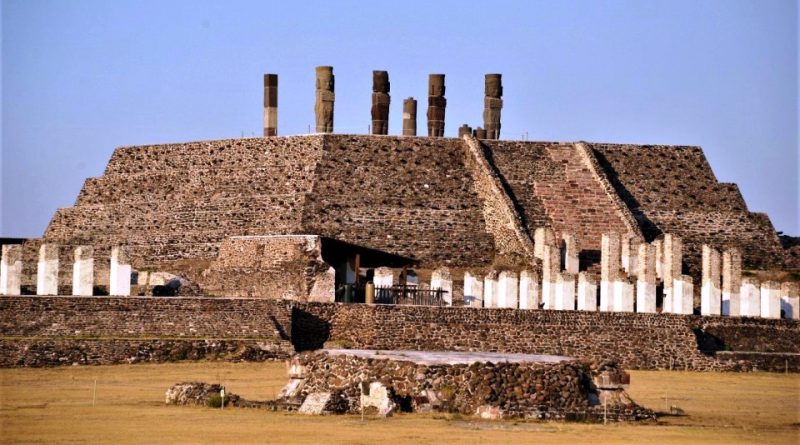The Toltecs and agriculture
The Toltecs and agriculture
The Toltecs were one of the great Mesoamerican civilizations that flourished in what is now central Mexico between the 9th and 12th centuries AD. C.. Their history is shrouded in myth and legend, and much of the information about their culture and reign has come down to us through oral histories, written documents by the Spanish conquistadors and by the descendants of the Mesoamerican civilizations.
The term “Toltec” comes from the Nahuatl word “Tōltēcatl”, meaning “craftsman”. However, in historical usage, the term refers to a civilization, city-state called Tula, or ethnic group that had an important influence on the Mesoamerican region.
Tula city:
The city of Tula has been identified as one of the main cultural centers of the Toltecs. It is located in the state of Hidalgo, Mexico. Tula flourished between 850 and 1150 AD, but its apogee is generally considered to be around the year 950 AD.
The Legend of Quetzalcóatl:
A central element of Toltec legends is the myth of Quetzalcóatl, often identified as the “Feathered Serpent”. Quetzalcóatl was a deity associated with several qualities, such as creation, wisdom, astronomy and art. According to legend, Quetzalcóatl was a wise warrior-king who ruled Tula and promoted art and knowledge. After a period of prosperity, he was prompted to abandon Tula, but before doing so, he promised to return sometime in the future. The legend of his return was also an important element for other Mesoamerican civilizations such as the Aztecs.
Decline of the Toltecs:
Despite initial prosperity, the Toltec civilization began to decline from the 12th century onwards. The causes of the decline are unclear, but some theories suggest possible internal conflicts, inadequate agriculture, or the influence of other foreign civilizations. As Tula declined, other Mesoamerican city-states emerged, such as Chichen Itzá in Yucatán, which was heavily influenced by Toltec culture.
Cultural heritage:
Despite the political decline of the Toltecs, their cultural influence survived for many centuries after the fall of Tula. Toltec culture had a significant impact on later civilizations, such as that of the Aztecs. The Aztecs considered Tula a sacred place and incorporated many elements of Toltec culture into their own religion and mythology.
In conclusion, the history of the Toltecs is shrouded in myth and legend, but it is clear that they were a civilization of great importance and influence in the Mesoamerican region. Their city-state of Tula was a significant cultural and political center, and the figure of Quetzalcóatl continued to be revered and passed down in the legends of later civilizations.
Agriculture –
There is no historical evidence of the ancient Toltecs to indicate that they specifically engaged in agriculture.
The Toltecs are primarily known for their artistic, architectural and military skills. They were skilled in working with stone, clay and wood, and devoted themselves to the construction of important ceremonial centers and cities, such as Tula. They were also famous for their influential artistic style, featuring stone carvings, murals and ceramics.
Agriculture in the region was very important to several other Mesoamerican cultures, but historians have insufficient evidence to confirm whether the Toltecs had any distinctive agricultural practices or whether agriculture was a central part of their society. Much of the knowledge about the Toltecs comes from mythical sources, legends, and later narratives of other Mesoamerican cultures, making it difficult to gain an accurate view of their daily lives and specific agricultural practices.
Tools and artifacts –
The Toltecs were a civilization known for its architecture, art, sculpture and engineering, but we don’t have many original written sources about them. Thus, much of the information comes from writings of other Mesoamerican civilizations and modern archaeological research.
Toltec tools and artifacts were similar to those of other Mesoamerican cultures of the time, but their art and architecture often reflected a distinctive taste. Some of the tools and artifacts believed to have been produced by the Toltecs include:
– Pottery: The Toltecs were skilled potters and produced a wide variety of pottery, including vases, plates, bowls and figurines. Toltec ceramics were often characterized by complex decorations and brightly painted.
– Stone sculptures: The Toltecs were known for their stone sculptures, such as the famous colossal heads. These heads depicted possible rulers or deities and often had distinctive features, such as helmets or elaborate decorations.
– Crafts in gold and silver: The Toltecs had skills in the art of metalworking and produced jewelry, ornaments and other works of art in gold and silver.
– Fabrics: Fabric manufacturing was an important economic activity for the Toltecs. They produced colored and embroidered fabrics with symbolic or iconographic motifs.
– Precious stone objects: The Toltecs also worked with precious stones such as jade, obsidian and turquoise to create ornamental objects and amulets.
– Architecture: The Toltecs were skilled architects and engineers, known for their majestic pyramids and temples. Their architecture was influenced by other Mesoamerican cultures, but also had distinctive features, such as carved columns and statues.
– Mural art: Frescoes and wall decorations were common in Toltec art. Often these paintings depicted mythological, ritual or historical scenes.
– Agricultural tools: The Toltecs used a variety of agricultural tools to cultivate the fields and harvest the basic food products but very little has come down to us.
– Utilitarian ceramic objects: In addition to decorative ceramics, the Toltecs also produced objects useful for daily life, such as containers for storing food or for domestic use.
However, it is important to note that much of what we know about the Toltecs is still a subject of debate and study among scholars. Since the Toltec civilization developed in an era prior to the arrival of the Spanish and there are no contemporary writings from this culture, the information is mainly based on archaeological finds and sources from other Mesoamerican civilizations.
Guido Bissanti

